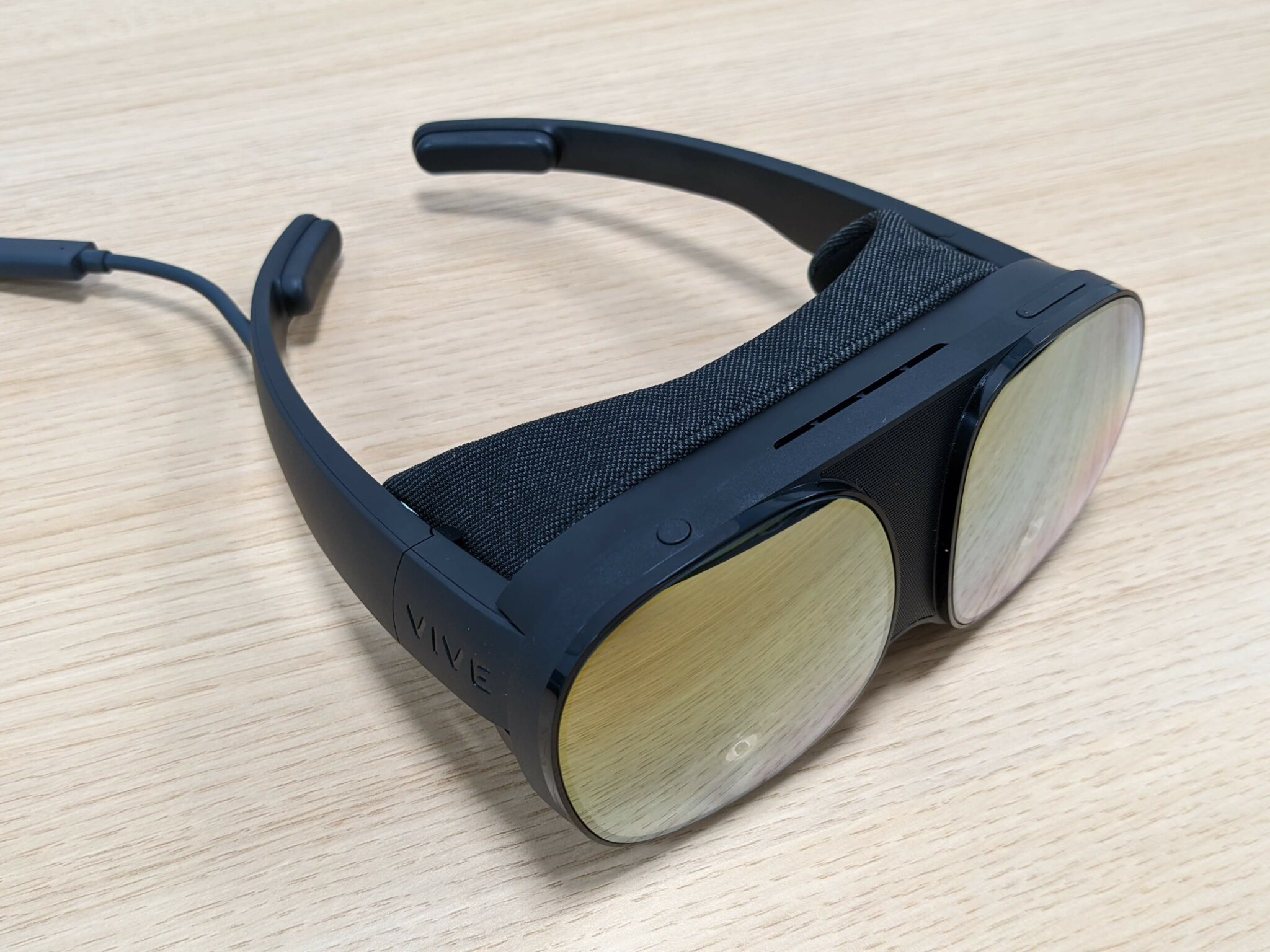HTC teased a new “small” Vive headset on Twitter, sharing only this image:
Go small or go home. pic.twitter.com/PUqqKn4V5E
— HTC VIVE (@htcvive) October 6, 2022
HTC confirmed the teaser was for a new headset in an email to UploadVR, and in multiple Twitter replies. Trying to boost the brightness of the image reveals no extra details except the text “Nice try 👍”.

So what could this new headset be?
A New Vive Flow?
HTC already sells the most compact VR headset available outside China, Vive Flow. Released last year, it’s a rather unique headset selling in a category of its own; it has an onboard chip for all computing tasks (including rendering and tracking) but is powered via a USB cable. You can use almost any USB port to power it, including laptops, phones, and those offered by trains, planes, and hotel rooms. The onboard battery is tiny, only intended for accidental disconnects lasting a few seconds.
Like Pico 4 and the upcoming Quest Pro, Flow achieves its form factor through the use of pancake lenses. Compared to fresnel or aspheric lenses, pancake lenses support smaller panels with a shorter gap to the lenses.

Flow is a niche product though. Its Snapdragon XR1 chip is significantly less powerful than the XR2 used in headsets like Quest 2 and Pico 4 and it lacks positionally tracked controllers, so it doesn’t support the majority of VR content.
HTC said Flow would get controller-free hand tracking, but that hasn’t happened yet. The company could be preparing a Flow 2 with a more powerful processor, hand tracking, and perhaps even tracked controllers.
A New Vive Focus?
Vive Focus is HTC’s standalone headset line, sold to businesses.
Vive Focus 3 shipped last year with higher resolution, wider field of view, and more RAM than Quest 2. But it’s priced at $1299, including the business license and warranty. A potential Focus 4 could achieve a slimmer & lighter design with pancake lenses.
Just last month HTC started selling face tracking and eye tracking add-ons for Focus 3. While that might seem like a reason not to quickly replace the device, HTC is no stranger to head-scratching product lineups serving overlapping markets.
HTC announced Focus Plus (essentially Focus 2) and Focus 3 in the first half of the year at two-year intervals. This would diverge from that schedule as well.
A Consumer Vive Standalone?
Of course, HTC could finally be about to do what fans have been asking it to for years – a gaming-focused standalone for consumers.
HTC has almost entirely withdrawn from the consumer market in recent years though, so this would be a significant strategy shift. Plus Meta is no longer the only competitor in town, HTC would also be taking on Pico 4.
Pico 4 already uses pancake lenses and is priced aggressively, reportedly with a subsidy from ByteDance. HTC rarely sells products with a thin margin and doesn’t really have the cash to subsidize mass-market hardware.
A New Vive PC Headset?
There’s no reason a compact headset with pancake lenses could only be a standalone headset. HTC currently sells two PC headsets, Vive Cosmos and Vive Pro 2.
Vive Pro 2 was released last year with an impressive resolution and field of view. But its $1399 full-kit price isn’t affordable for most consumers.
Vive Cosmos on the other hand sells for $499, but is now three years old. Assuming HTC is still interested in this segment, Cosmos is ripe for a successor and using pancake lenses for a compact design would be a unique selling point over HP Reverb G2 and Valve Index.




























